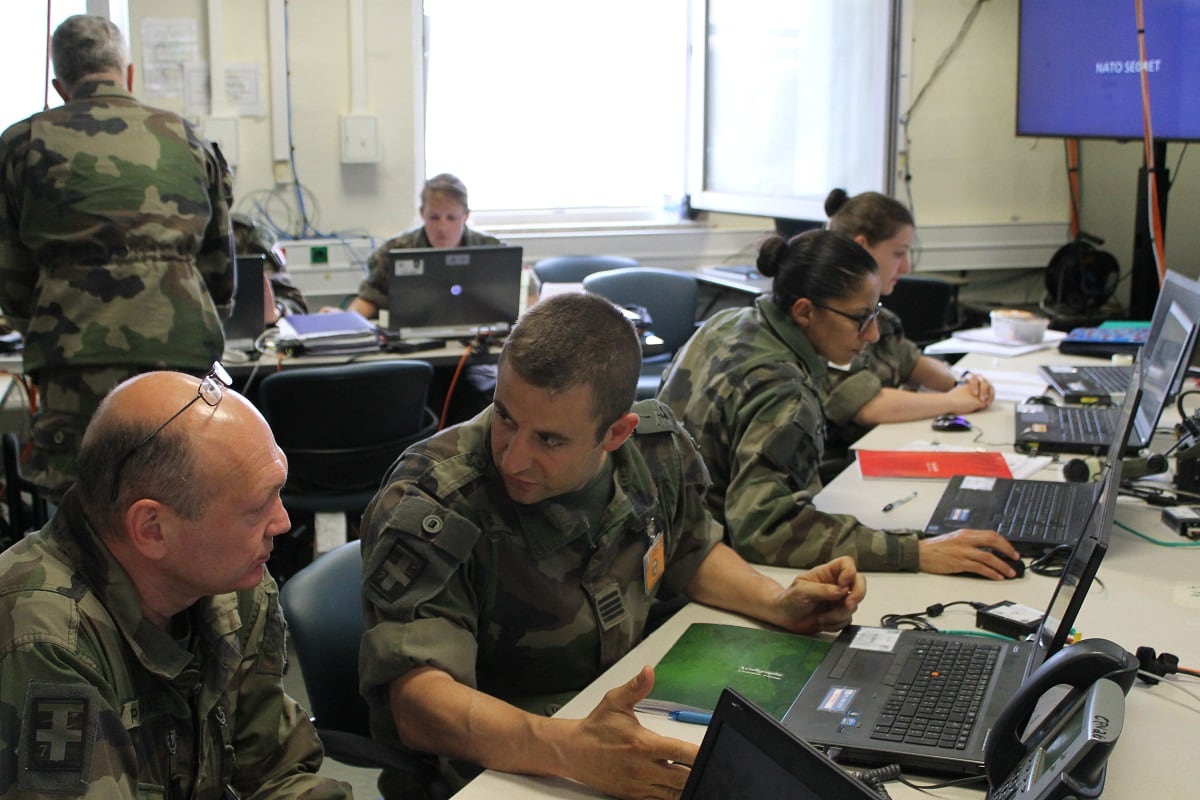HUNTSVILLE, Alabama — The U.S. is evermore so seeing the need for increased interoperable with allies when it comes to missile defense, but there are many challenges still to overcome, according to a panel of former and current missile defense stakeholders at the Aug. 7 Defense News Missile Defense Networking Reception.
“Probably the challenge that we struggle with the most with regards to our foreign partners is increasing and enhancing our cross-domain solution capability,” said Col. Francisco Lozano, the Army’s project manager for the service’s Lower Tier Project Office within the Program Executive Office Missiles and Space. “So not only just the ability to share information between our international partners in a given combat scenario but actually to do it at a high enough fast-data rate so that the information is relevant and actionable.”
The Army has worked toward this in European exercises, focusing on both missile defense and all levels of information sharing as the service attempts to tie together systems and networks. This is to ensure the coalition can respond in a crisis and information will flow more freely and in a more timely fashion for allies and partners.
RELATED

“So that becomes important for us to continue to improve, especially as just U.S. defense systems in general proliferate across multiple different countries” Lozano said.
The colonel noted that the Army is finding ways to learn from its partners and allies that are involved in regular combat operations, even if they are not directly connected system to system.
“We stay tied in very closely with them, and it has become a great partnership situation where we are continuing and able to work very closely in their country to understand the execution of engagements; what impacts are on certain systems and certain environments operated 24/7 for very long periods of time; understand the relevancy of certain threats and how those threats are employed; and then improve those through [tactics, techniques and procedures] and [concepts of operations] not only for a given country but also for ourselves,” Lozano said.
That in particular holds true for the Patriot air-and-missile defense system under Lozano’s purview, which has seen plenty of recent action in the war in Yemen. Saudi Arabian-owned Patriot systems have seen regular engagement with Houthi rebel missile attacks coming from Yemen.
But the struggle to get systems to share information and talk, even if they are the same systems like Patriot, remains an issue.
“Sometimes some of the reluctance to integrate an allied nation’s missile defense systems goes to cyber vulnerabilities, and that is something that gets a lot of interest and consideration before you add something to the architecture,” said retired Army Lt. Gen. David Mann, the service’s former Space and Missile Defense Command chief. “We have brain power to make systems work together, but we have to make sure that we don’t introduce vulnerabilities, whether it’s cyber or anything else that will compromise the system writ large.”
Despite the challenges, it’s important for the U.S. to continue to foster the adoption of missile defense capabilities within countries that can afford their own systems or partial systems, according to Raytheon’s vice president of Air and Missile Defense Systems, Mitch Stevison. That’s because the U.S. “cannot afford to defend every square inch of the world,” he noted.
While it’s a struggle when it comes to policy to get Patriots owned by different countries to talk to one another, having interoperable systems will be critical in building a robust international missile defense framework in the future.
A surge of European countries are buying Patriot, for example, with Poland, Romania and soon-to-be Sweden joining the ranks of Patriot owners. Switzerland is also considering the purchase of the Patriot system.
But even if not every country can buy Patriot, there is still a way to create a robust international or regional missile defense framework, said Richard Yu, the director of the capability development integration directorate at the U.S. Army’s Space and Missile Defense Command’s Future Warfare Center.
Yu said the U.S. should take a page from NATO’s missile defense framework, which is linked through a command-and-control system. Sometimes a country can afford to buy Patriot or Aegis, but when that’s not the case, a country can buy part of a missile defense system and tie it into the framework, he said.
For instance, according to Yu, the Dutch have “great” missile defense sensors, but no shooters, so Belgium bought a lot of interceptors to complement that.
“The currency of international partnership is a little different and defined by what they are able and willing to contribute,” Yu said. “If we can use that kind of currency with our framework with our allies and build upon the trust and, based on the framework that we can use, we can do a lot more. We just have to keep our minds open to what kind of currency international partnerships are able to provide.”
Jen Judson is an award-winning journalist covering land warfare for Defense News. She has also worked for Politico and Inside Defense. She holds a Master of Science degree in journalism from Boston University and a Bachelor of Arts degree from Kenyon College.








